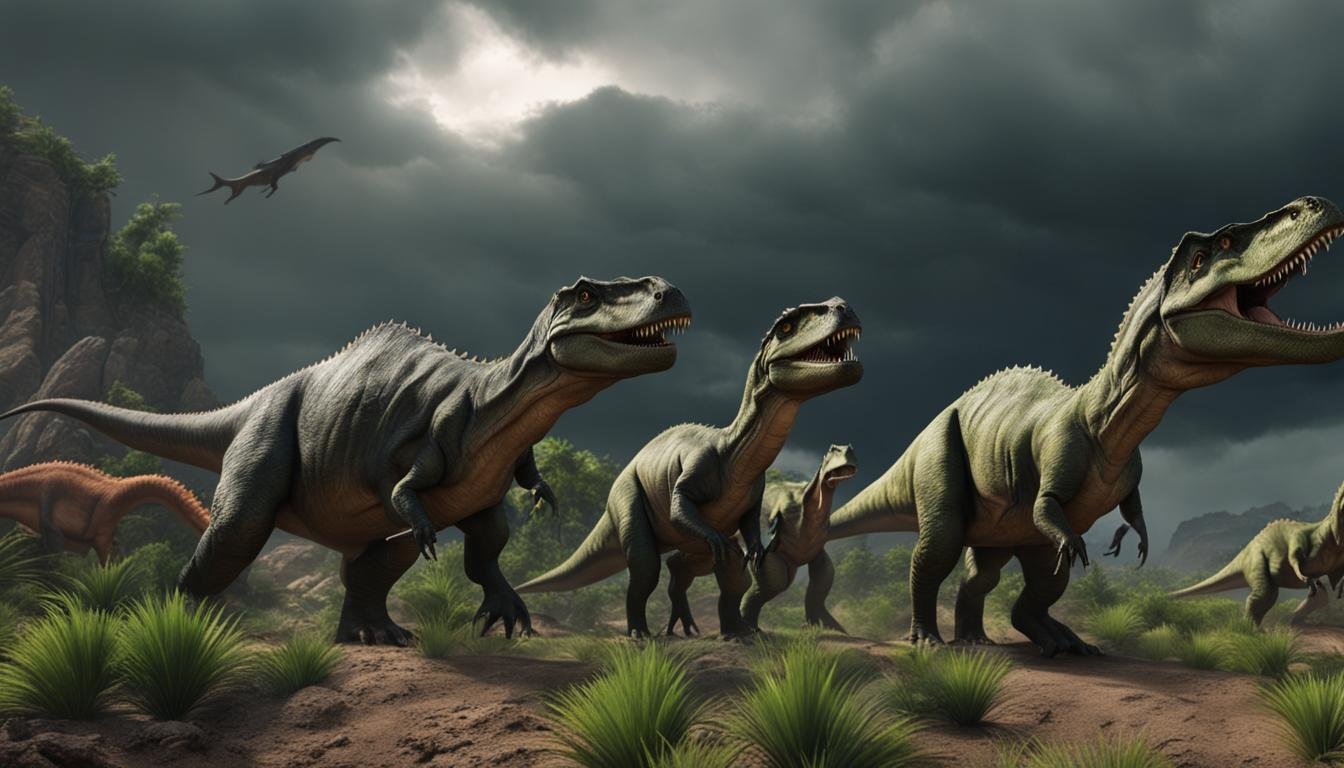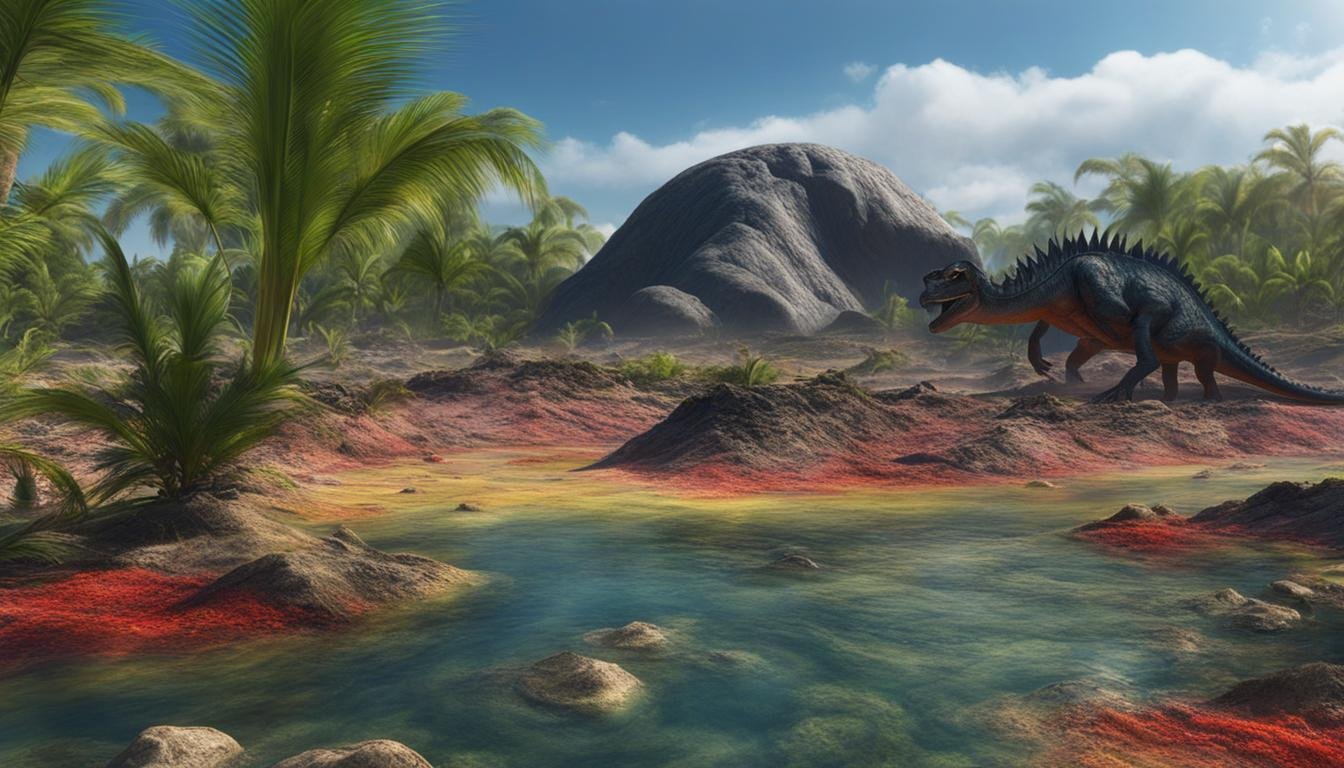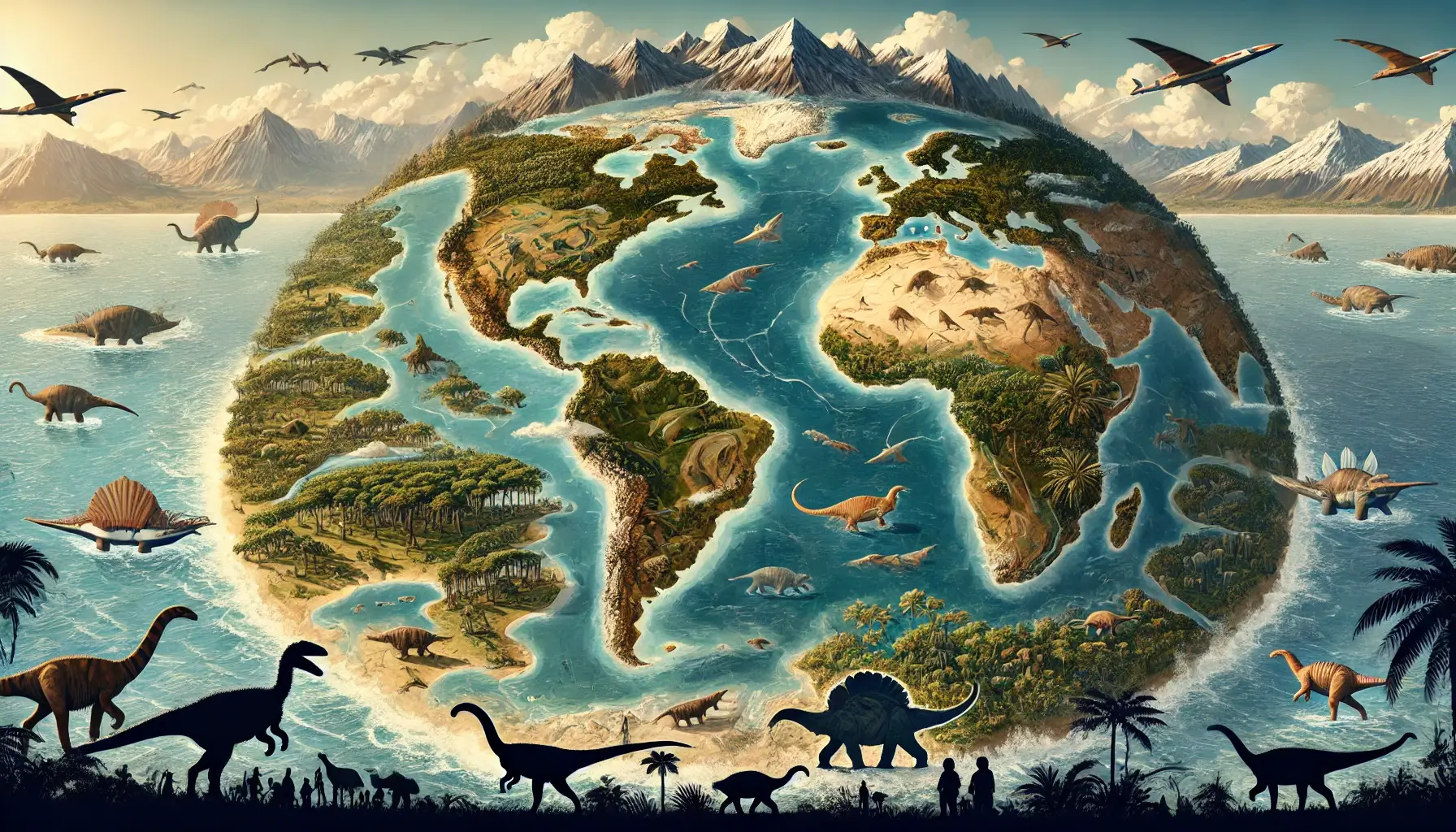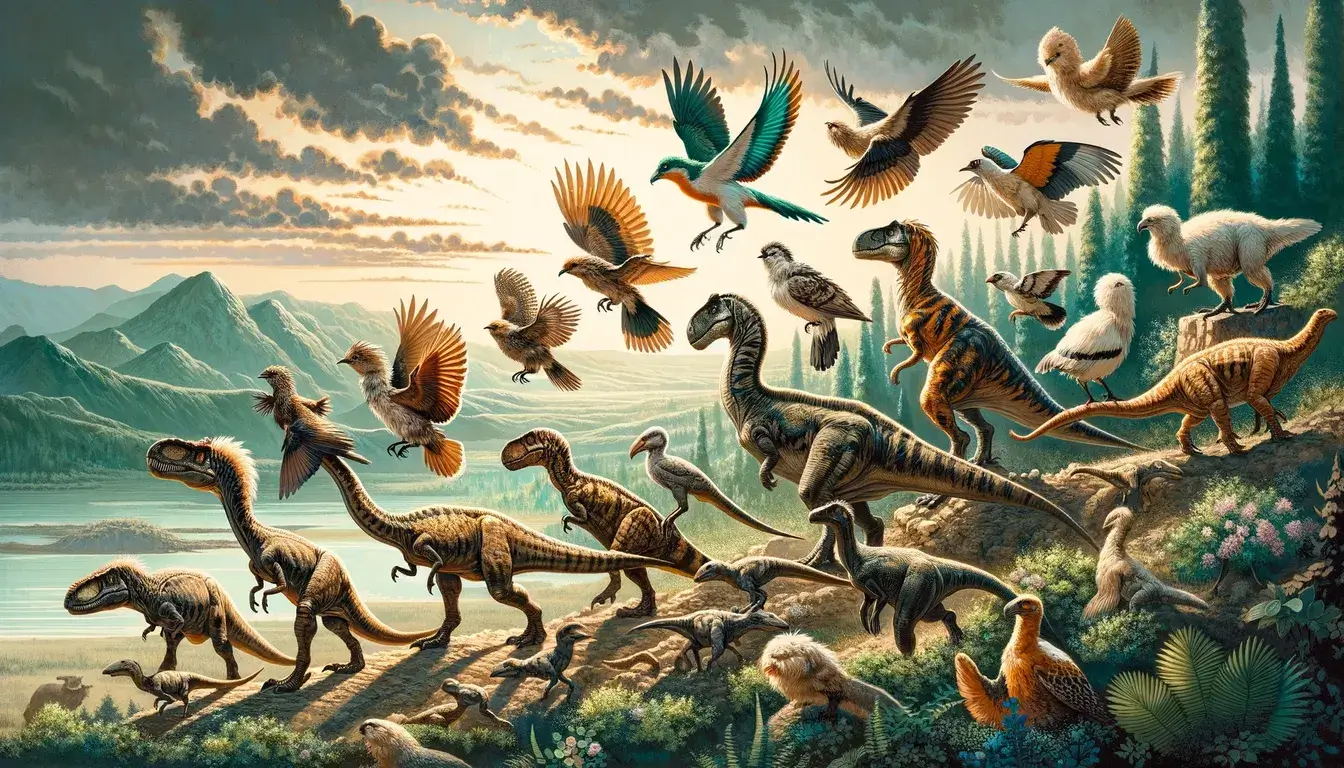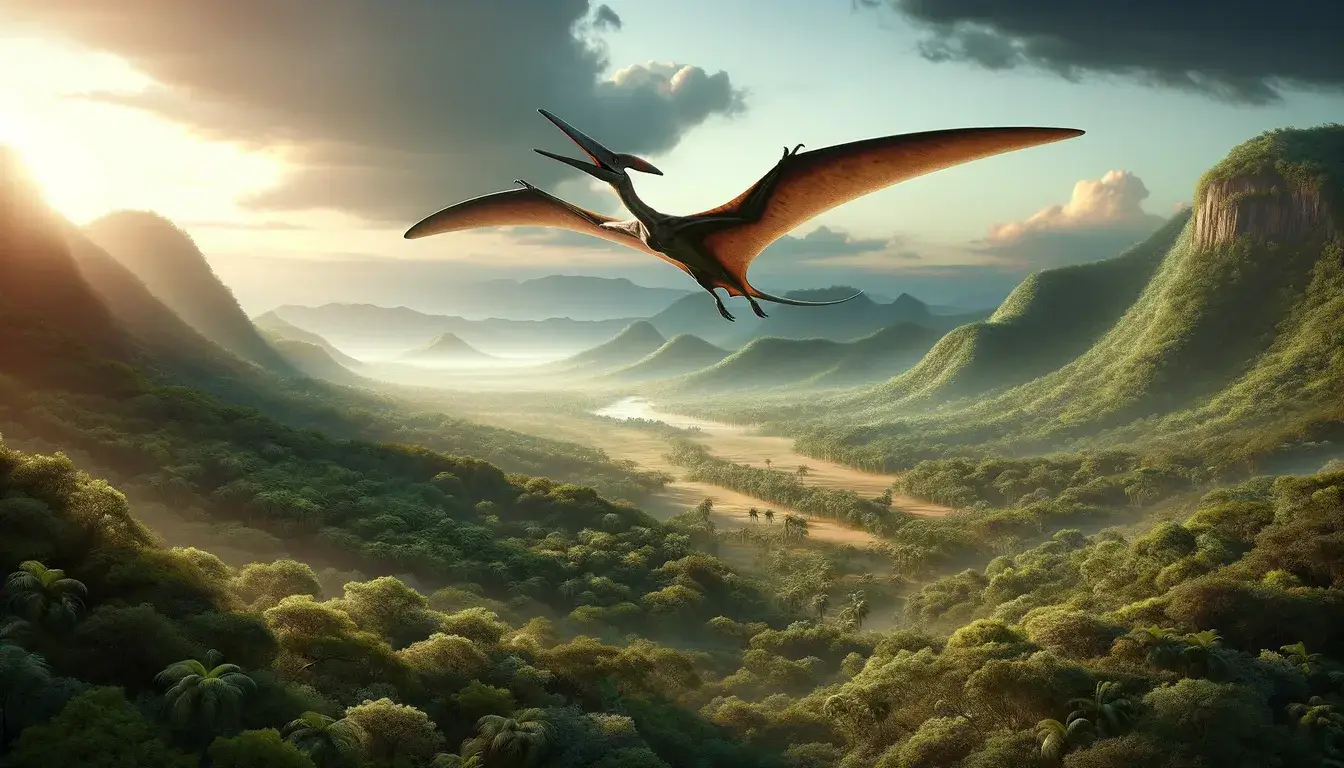The extinction event that led to the disappearance of aquatic dinosaurs, including marine reptiles like ichthyosaurs, plesiosaurs, and mosasaurs, occurred at the boundary between the Cretaceous and Paleogene periods, about 66 million years ago. This event, known as the K-T extinction or Cretaceous-Paleogene extinction, resulted in the elimination of approximately 80 percent of all animal species, including the majority of dinosaurs. The extinction was triggered by multiple factors, including asteroid impacts, volcanic activity, and changes in global climate and sea levels. The extinction of aquatic dinosaurs had significant implications for the marine ecosystems of the Mesozoic seas.
| Main Point | Description |
|---|---|
| Timing of Aquatic Dinosaur Extinction | The extinction of aquatic dinosaurs coincided with the transition from the Cretaceous to the Paleogene period, around 66 million years ago. |
| Impact of the K-T Extinction Event | The K-T extinction event led to the demise of about 80 percent of all animal species, including most dinosaurs. |
| Contributing Factors to Extinction | The extinction of aquatic dinosaurs was influenced by a combination of asteroid impacts, volcanic activity, climate change, and sea level fluctuations. |
| Effects on Marine Ecosystems | This extinction event had profound impacts on the marine ecosystems that existed during the Mesozoic era. |
| Insights into Past Ecosystems and Biodiversity | Studying this extinction event offers valuable insights into ancient ecosystems and the importance of preserving marine biodiversity. |
Causes of the Extinction Event
The K-T extinction event, also known as the Cretaceous-Paleogene extinction, was a significant event in the history of our planet. It marked the end of the Mesozoic Era and resulted in the extinction of numerous animal lineages, including aquatic dinosaurs like ichthyosaurs, plesiosaurs, and mosasaurs. This extinction event was not caused by a single factor but rather by a combination of different elements.
One of the major contributing factors to the extinction was the impact of a large asteroid or comet, such as the one that created the Chicxulub crater in Mexico. This impact would have caused widespread devastation, including massive wildfires, tsunamis, and a global dust cloud that blocked out sunlight, leading to a significant drop in temperature. Volcanic activity, along with the release of greenhouse gases, also played a role in the extinction event.
Changes in global climate and sea levels were additional factors that contributed to the extinction. The shifting climate patterns and rising sea levels would have disrupted the habitats of aquatic dinosaurs, making it difficult for them to survive. These environmental changes likely led to significant declines in food availability and the loss of essential breeding and nesting grounds.
| Causes of the Extinction Event | Impact |
|---|---|
| Asteroid impact | Widespread devastation, global dust cloud, temperature drop |
| Volcanic activity and greenhouse gas emissions | Environmental disruption, climate change |
| Changes in global climate and sea levels | Habitat disruption, food scarcity |
“The combination of asteroid impacts, volcanic activity, and changes in climate and sea levels resulted in a perfect storm, leading to the extinction of aquatic dinosaurs and other marine organisms.”
In conclusion, the causes of the K-T extinction event were multi-faceted, involving asteroid impacts, volcanic activity, changes in global climate, and sea level fluctuations. These factors created a hostile environment for aquatic dinosaurs, ultimately leading to their extinction. Understanding these causes is crucial for gaining insights into the dynamics of past ecosystems and the potential impacts of similar events in the future.
Impact on Marine Ecosystems
Fossil record analysis and paleoenvironmental studies have provided valuable insights into the impact of the extinction event on marine ecosystems. These studies have allowed scientists to understand the changes that occurred in the marine environment following the extinction of aquatic dinosaurs. The loss of various marine organisms, such as ammonoids, hermatypic corals, rudist bivalves, and larger foraminifers, has been documented through the examination of fossil remains. This evidence suggests that the extinction event led to a significant loss of marine biodiversity.
Additionally, oceanographic changes caused by the extinction event had a profound effect on marine ecosystems. Shifts in salinity, temperature, and chemistry disrupted the delicate balance of marine habitats, leading to the destruction of essential breeding grounds and feeding areas. These changes in oceanographic conditions also impacted the predator-prey dynamics within the marine food web, further destabilizing marine ecosystems.
Overall, the extinction of aquatic dinosaurs had far-reaching consequences for marine biodiversity and the functioning of marine ecosystems. The loss of key species and the disruption of habitats had cascading effects on other organisms and ecological processes. Understanding these impacts is crucial for comprehending past marine ecosystems and informing conservation efforts to protect present-day marine biodiversity.
| Impacts of Extinction Event on Marine Ecosystems | Evidences |
|---|---|
| Loss of marine organisms | Fossil remains of ammonoids, hermatypic corals, rudist bivalves, and larger foraminifers. |
| Disruption of marine habitats | Oceanographic changes resulting in shifts in salinity, temperature, and chemistry. |
| Altered predator-prey dynamics | Changes in the aquatic food web due to the loss of key species. |
The Role of Global Climate Change
Global climate change played a significant role in the extinction of aquatic dinosaurs. The extinction event coincided with a period of global cooling, which had a detrimental effect on marine ecosystems. The sea temperature changes and other climate variables caused shifts in ecological niches, making it difficult for aquatic dinosaurs to survive. The resulting impacts of global warming, such as increased greenhouse gas emissions and rising sea levels, further exacerbated the challenges faced by these marine reptiles.
“The combination of climate change and other environmental factors ultimately led to the extinction of aquatic dinosaurs.”
One of the key effects of global climate change was the disruption of ecological niches, which are specific habitats that harbor various species. As sea temperatures fluctuated, certain habitats became inhospitable for aquatic dinosaurs, restricting their ability to find suitable food sources and shelter. This disruption in ecological niches caused a decline in population numbers and increased competition among marine organisms, further contributing to the extinction event.
“The combination of climate change and other environmental stressors contributed to the extinction of these marine reptiles.”
| Impact | Description |
|---|---|
| Shifts in Sea Temperatures | The fluctuations in sea temperatures disrupted the ecological niches of aquatic dinosaurs, making it challenging for them to adapt and survive. |
| Increased Greenhouse Gas Emissions | The rise in greenhouse gases contributed to global warming, intensifying the effects of climate change on marine ecosystems. |
| Rising Sea Levels | The rise in sea levels caused by global warming resulted in changes in coastal habitats, altering the availability of resources for aquatic dinosaurs. |
The role of global climate change in the extinction of aquatic dinosaurs highlights the interconnected nature of Earth’s ecosystems. The complex interactions between climate variables, ecological niches, and species survival necessitate our continued efforts to mitigate the effects of climate change and preserve marine biodiversity. Understanding the impact of global climate change on past extinction events helps us comprehend the potential consequences for the current and future biodiversity of our planet.
Fossil Record Analysis and Paleoecological Evidence
One of the key sources of evidence for understanding the extinction of aquatic dinosaurs is the analysis of the fossil record. Paleontologists have meticulously examined fossils from various geological formations to uncover crucial insights into the past. By studying these ancient remains, scientists have been able to piece together the story of how aquatic dinosaurs vanished from the Earth.
Through rigorous fossil record analysis, researchers have identified changes in the distribution and abundance of marine reptile fossils, providing valuable clues about the extinction event. The presence of a higher concentration of fossils in certain areas and their absence in others indicate variations in paleoecological conditions. This data suggests that continental shelf changes played a significant role in shaping the fate of aquatic dinosaurs.
“The fossil record provides a window into the past, allowing us to visualize the incredible biodiversity that once thrived in Earth’s ancient seas,” says Dr. Sarah Turner, a leading paleontologist. “By carefully examining the fossil evidence, we can piece together the complex puzzle of how aquatic dinosaurs went extinct.”
The Impact of Continental Shelf Changes
Continental shelf changes, which refer to alterations in the configuration of land masses and their submerged extensions, had a profound impact on the marine environment. These changes affected the availability of habitats and food sources for aquatic dinosaurs, ultimately contributing to their demise. As the continental shelves shifted, certain areas became inhospitable for these marine reptiles, disrupting their ecological niches and pushing them towards extinction.
Furthermore, continental shelf changes also influenced the dispersal patterns of marine organisms and disrupted the connectivity between different populations. This fragmentation of habitats limited the ability of aquatic dinosaurs to migrate and adapt to new environments, further exacerbating their vulnerability to extinction. Paleoecological evidence, derived from the analysis of fossils and sediment records, has provided important insights into these continental shelf changes and their impact on the survival of aquatic dinosaurs.
| Continental Shelf Changes and the Extinction of Aquatic Dinosaurs | Impact |
|---|---|
| Shifts in shelf configurations | Disrupted ecological niches and habitats |
| Fragmentation of habitats | Restricted migration and adaptation |
| Altered dispersal patterns | Reduced connectivity between populations |
As our understanding of the fossil record deepens and new paleoecological evidence emerges, we continue to gain valuable insights into the factors that led to the extinction of aquatic dinosaurs. Fossil record analysis and the study of continental shelf changes provide a clearer picture of the complex dynamics that shaped the ancient marine ecosystems and the fate of these fascinating creatures.
Groundbreaking Studies and Findings
Groundbreaking studies have provided valuable insights into the extinction of aquatic dinosaurs and the factors that contributed to their demise. One significant area of research is focused on ocean acidification and its impact on marine organisms. Ocean acidification occurs when carbon dioxide from the atmosphere is absorbed by seawater, leading to a decrease in pH levels. This change in ocean chemistry has detrimental effects on marine reptiles and other organisms, affecting their ability to build and maintain calcium carbonate-based structures such as shells and skeletons.
Another critical area of study is habitat destruction, particularly changes in continental shelf structures. The continental shelf plays a vital role in providing a suitable environment for marine life, including aquatic dinosaurs. However, changes in sea levels and tectonic activity can alter the structure and availability of these habitats, making it challenging for marine reptiles to find suitable breeding grounds and food sources.
One compelling finding from these studies is the significant correlation between continental shelf changes and the decline of aquatic dinosaur populations. As continental shelves contracted and became more fragmented, the available habitats for these marine reptiles decreased, leading to reduced populations and ultimately contributing to their extinction.
These groundbreaking studies highlight the complex interplay of factors that led to the extinction of aquatic dinosaurs. Ocean acidification and habitat destruction are just two of the many ecological and environmental challenges these marine reptiles faced. By understanding the impact of these factors, researchers gain valuable insights into the fragility of marine ecosystems and the importance of preserving biodiversity in our modern world.
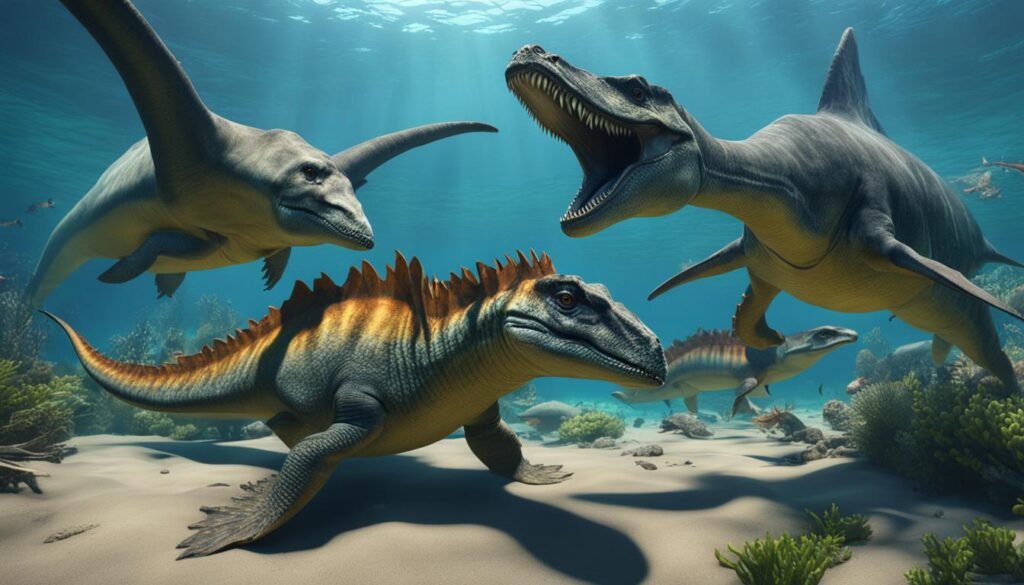
| Factors | Description |
|---|---|
| Ocean Acidification | Changes in ocean chemistry, specifically a decrease in pH levels, impacting the ability of marine organisms to build calcium carbonate-based structures. |
| Habitat Destruction | Alterations in continental shelf structures resulting from changes in sea levels and tectonic activity, reducing available habitats for marine reptiles. |
| Climate Change | Global warming effects, such as rising sea levels and changes in temperature, disrupting ecological niches essential for the survival of aquatic dinosaurs. |
| Competition and Predation | The presence of new marine species and increased predation pressure due to changes in the marine ecosystem. |
Conclusion
The extinction of aquatic dinosaurs, such as ichthyosaurs, plesiosaurs, and mosasaurs, was a complex event influenced by multiple factors. It occurred around 66 million years ago, at the boundary between the Cretaceous and Paleogene periods. This extinction event was triggered by a combination of asteroid impacts, volcanic activity, climate change, and sea level fluctuations.
The consequences of this extinction event were significant for marine ecosystems. Biodiversity was greatly impacted, resulting in the loss of various marine species. The disruption of marine food webs also occurred, causing changes in predator-prey dynamics and the overall functioning of aquatic ecosystems. The extinction of these marine reptiles had long-lasting effects on the Mesozoic seas.
Evidence from the fossil record and groundbreaking studies have provided crucial insights into the causes and consequences of this extinction event. By understanding the special considerations surrounding the extinction of aquatic dinosaurs, we can gain a deeper understanding of past ecosystems and the ongoing preservation of marine biodiversity. It is imperative that we continue to study and learn from these remarkable creatures that once roamed the Mesozoic seas.

